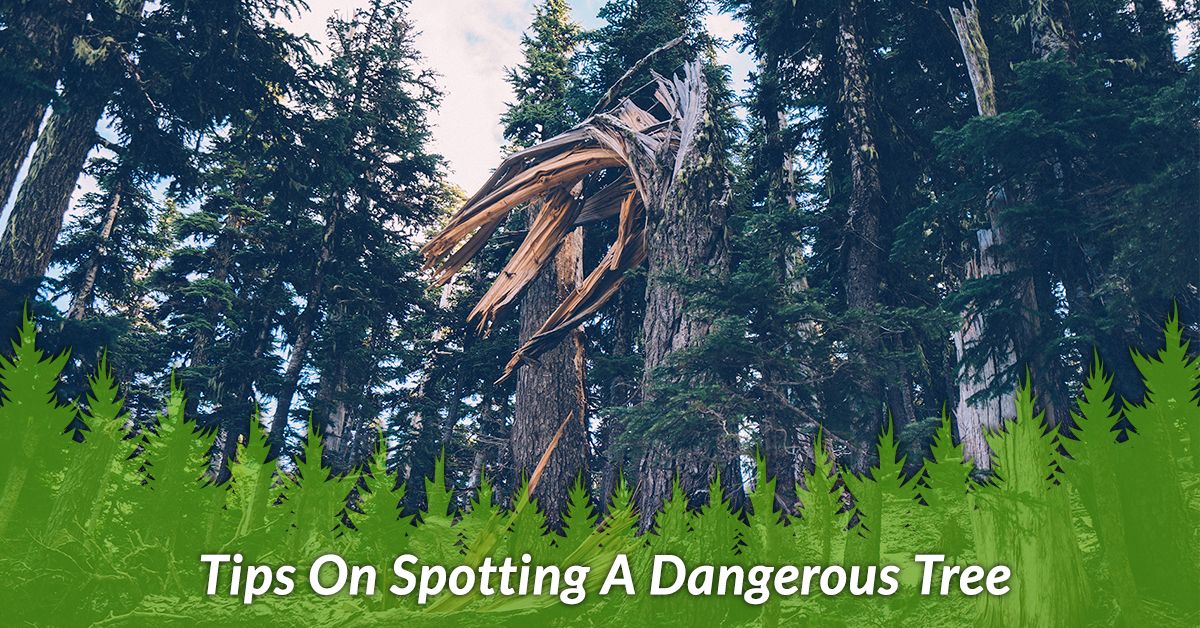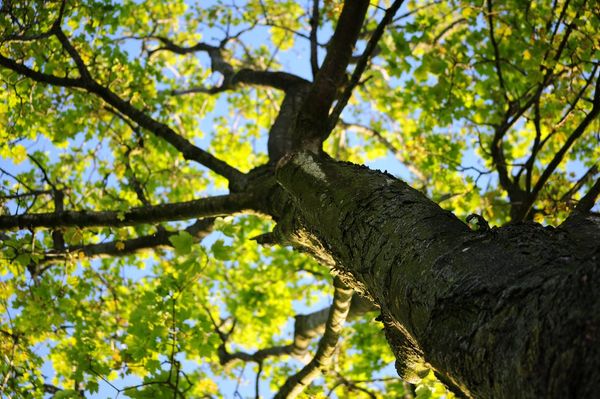The Overall Tree
When it comes to inspecting your trees, try to start your inspection from a place where you can see the entire tree at once. Is your tree leaning in one direction or another? Can you see big dead branches hanging from it? Are there sections of your tree where leaves have started dropping prematurely? If you notice any of these signs, it may be time to contact a professional arborist. They will be able to inspect your tree for any safety hazards, and they can recommend the best treatment solution for you.
Ground Inspection
Once you’ve inspected the current state and health of your tree, it’s time to move your focus to the ground. As you may already know, a tree is held up and fed by its root system. There are two main types of tree roots to be aware of. The anchoring or structural roots used to support the tree are often the most visible. Absorbing roots, on the other hand, tend to hide below ground, where they provide the tree with the water and nutrients it needs from the soil.
When a tree has anchoring roots that are rotting or in decay, this can lead to a myriad of issues. While the tree may appear to be healthy and strong, the reality is that it can fall over at any time. The ground and soil surrounding the base of the tree can help to provide clues to the severity of the problem. Some arborists will pull back any ivy or ground cover to take a closer look at where the soil meets the trunk. If they see cracked or raised soil, it may indicate root disturbances. If there is fungal growth such as mushrooms near the tree’s roots or trunk, this is a clear sign of rot and decay. The presence of fungus is a telltale sign that something is wrong with your tree, since fungus only grows on decayed wood.
Trunk Inspection
The trunk of a tree supports the massive weight of the tree branches. If you think there may be something wrong with your tree, take some time to inspect the trunk. If there are cracks or cavities in the trunk, the entire tree may be at risk of breaking apart or splitting. Some factors to consider are where the cavity is located, where the tree is growing, and the overall health of the tree. If you notice spots where bark is falling off of the trunk, this may be an indication of a dead section or a fungus attack.
Canopy Inspection
As you may have guessed, one of the most common and obvious signs of tree danger is the appearance of dead wood. When trees are not getting enough sunlight, they will naturally start to shed their branches. A pine branch will have brown needles if it’s dying, and the bark will start to fall off branches, especially after a storm. If you spot dead wood on your tree or you notice spots on the branches that don’t have leaves, it may be time to reach out to a certified arborist.
We hope that these tips help you as you inspect your trees for broken branches and hazards. To get the very best care for your tree, reach out to a local arborist to schedule a tree inspection. If you live near Elmhurst and you’re looking for a professional arborist to inspect the health of your trees, contact J&S Tree Service today.


